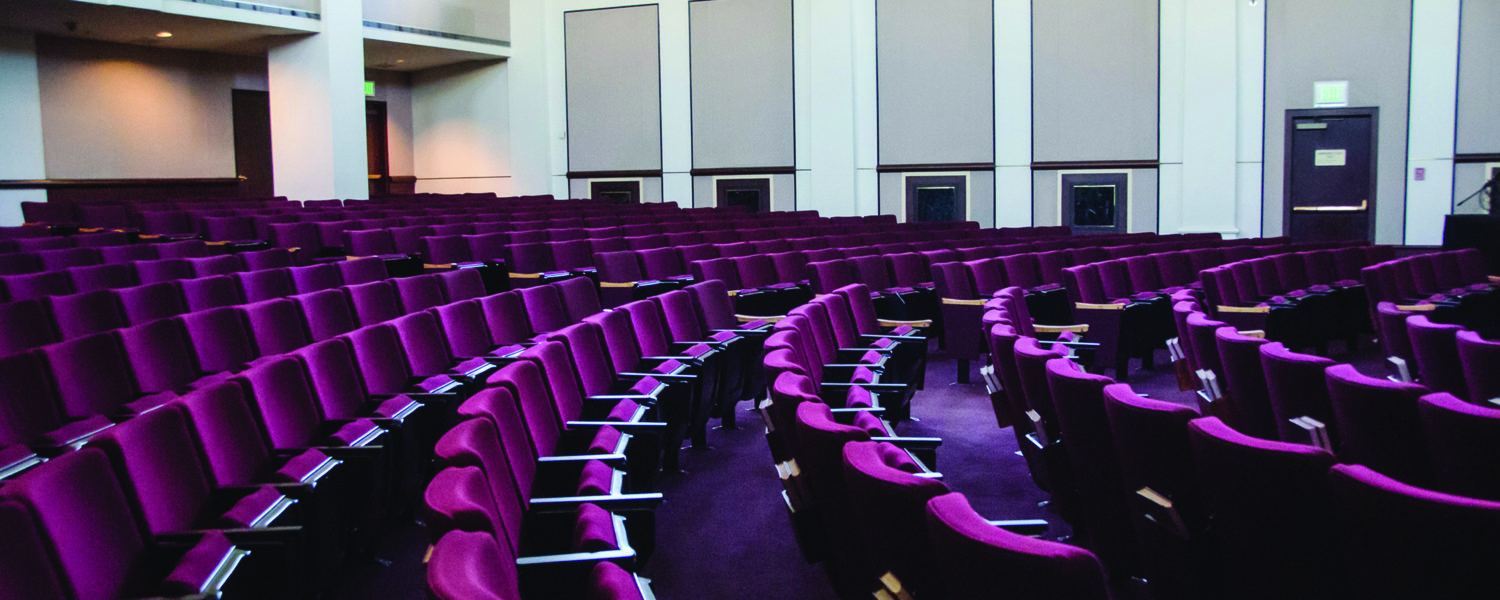We recently spoke with Steve at K-Bilt Worship Furniture to find out what questions a church should ask when choosing auditorium or sanctuary seating.
All churches desire to be good stewards of their budget; with so many different types of seating available, how do they make the best decision? Here’s what Steve said.
Pews, Chairs or Theatre Seating?
Q: What factors should a church consider before deciding to purchase pews, chairs or theatre seating?
A: Different styles of worship require different styles of seating. The most important factor to consider is that different styles of seating require different spacing, and this will affect the total seating capacity of the room.
- Traditional Style: Pews can be used throughout, but can be combined with wood framed chairs.
- Contemporary Style: Theatre style seating is especially designed for the worship market and can be mixed with interlocking chairs to match. If all non-fixed seating is required in your sanctuary, using only interlocking chairs is also appropriate for this style.
- Multi-Use: Chairs that are interlocked for your formal services can be repositioned and used together with tables for a banquet style setting. For frequent multi-use setups, we recommend using a metal frame chair as they are more resilient than wood when moving and stacking repeatedly.
When a worship style has been determined, you can then work with different seating configurations, which will help determine your final seating capacity.
Types of Chairs
Q: What are some of the different kinds of chairs available?
A: Metal frame chairs and wood frame chairs are available. Look for designs that ensure maximum support and that suit your specific needs. This could include chairs for your sanctuary, clergy or platform, choir, classroom, chapel, banquet hall, café and social gathering places.
Chairs and Sloping Floors
Q: Can chairs be installed on a sloped auditorium floor?
A: Yes, chairs can be used on sloped floors, but it will depend on the degree of slope. If the slope is more than approximately 3 percent (3″ vertical for every 100″ horizontal), then the back legs will need to be modified at the manufacturing plant.
Church Seating Warranties
Q: Realistically, how long can a church expect seating to last? What are some typical manufacturer’s warranties?
A: The “lifetime” of church seating will depend on the overall usage per week. Realistically a church can expect their seating to last:
- Pews: Upholstered – 20-35 years
- Pews: All wood – 50-100 years
- Auditorium theatre seating – 10-20 years
- Chairs: Metal frame – 15-25 years
- Chairs: Wood frame – 20-25 years
Make sure you ask the supplier what “lifetime” means. You may be surprised to learn that a “Lifetime Warranty” only covers the expected lifetime of the product. If the product has an expected life of 10 years, then that “Lifetime” warranty is only good for 10 years.
Typical Manufacturer’s warranties:
- Pews: Upholstered – 25 years; Foam & Fabric 15 years
- Pews: All wood – 25 years
- Auditorium theatre seating – 10 years
- Chairs: Metal frame – 25 years; Foam & Fabric 10 years
- Chairs: Wood frame – 10 years
A Manufacturer’s Warranty will typically cover all defects in material and workmanship under normal usage during their warranty period. Keep in mind there will be normal wear and tear during your weekly and sometimes daily usage.
Seating and Sustainability
Q: For a church that wants to make sustainable choices, what seating products should they consider?
A: The first and most important consideration is to find a company that employs sustainable practices. This starts with a commitment to stewardship, and it means the company actively seeks to conserve, recycle and act with respect toward the environment.
This could include, but is not limited to, sourcing of raw materials and recycling. Some manufacturing companies will operate co-generation plants where they convert wood scraps to electricity.
Need more information? While this general overview is a good place to start, if you’re serious about purchasing new seating for your church we recommend you get in touch with an expert who can help you make the best decision.
This information is courtesy of Parker Seminoff Architects, www.parkerseminoff.com.
Dedicated Sanctuary or Multi-Purpose Auditorium?
Few questions generate more discussion during the design stage than this one. When it comes to the idea of a sanctuary, many people feel it needs to be dedicated solely to worship and don’t really understand the concept of a multi-purpose worship space.
Defining Multi-Purpose Worship Space
Multi-purpose worship space does not mean using a ‘gymnasium’ for worship, but using a worship space for other activities. This is an important distinction.
Characteristics of a multi-purpose auditorium are a flat or tiered floor, chairs rather than permanent seating, and extensive multi-media equipment. The space can then be used for a variety of uses requiring changes in the seating arrangement, such as seminars, dinner theatre, meetings, concerts, children’s and youth events.
The features of a multi-purpose worship space will not detract from the worship experience. To accommodate sports, you’ll need to pay attention to interior wall surfaces, lighting and ceiling height but it does not have to look like a gym.
Platform areas and chancels can be designed so they are set into the side walls and look like a normal worship space but can be cordoned off during other activities. Other room features such as windows, ceilings and finishes can all be designed to complement worship and still allow for other uses.
Advantages to Multi-Purpose Worship Space
- Reduced cost: Dedicated space used only a few hours a week is expensive due to its original construction cost and continuing utilities costs. The church also may not have to build another large space for uses other than worship.
- Accommodates a variety of worship styles: Contemporary worship styles require flat platform space for bands, drama or other non-traditional worship events.
- Allows a variety of ministry activities: A flat and/or widely tiered floor allows banquets, seminars, youth events and dinner theatre.
Advantages to Dedicated Worship Spaces
A worshipful atmosphere: Sloped floor for good sight lines to the platform, comfortable seating, well-tuned acoustics, elegant interior design
Equipment set up: Technical team will spend less time setting up equipment for worship because the space can be set up and left alone from week to week.
Less maintenance: With reduced use comes reduced maintenance, cleaning and wear-and-tear from continually readjusting the room.
While many churches will appreciate the reduced costs and flexibility of a multi-purpose worship space, it’s a question that can only be answered by balancing budget, preference, and ministry objectives.












